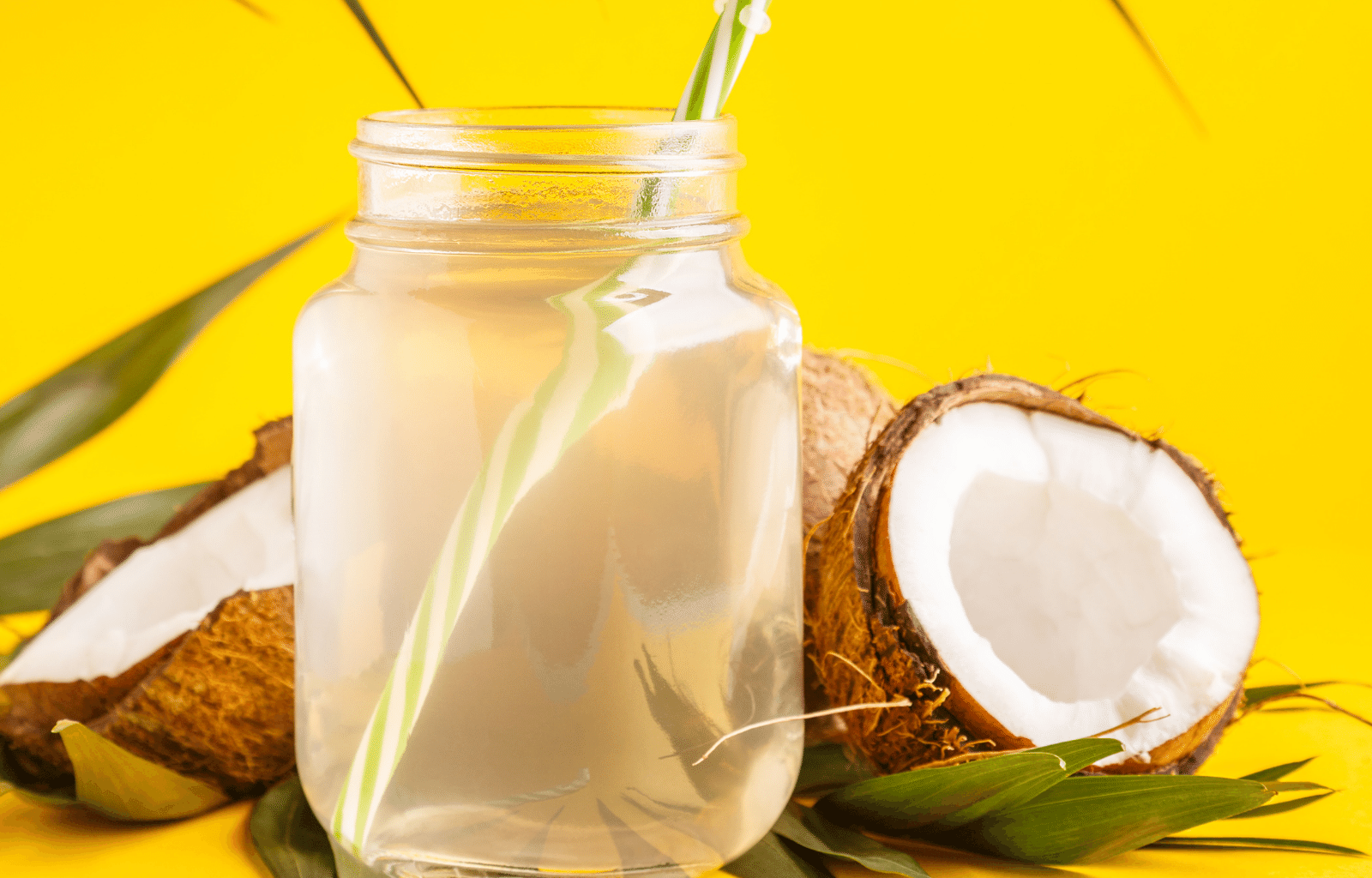My three-year-old much-endeared water kefir broke all over my kitchen counter a couple of weeks ago. I should have taken pictures. But I was just too sad.
I had nurtured them for a long time. And treated them almost like pets. Even asking them every morning, "how are you today?"
And fretting over them when they failed to bubble. I don't know if any of that helped. But ... in hindsight ... they're surprisingly easy to help grow and flourish.
Yes ... you can buy kefir ... it's available in most groceries these days. But this is a heck of a lot more fun! And ... thinking about it ... it takes less than five minutes every couple of days (including the fretting and cajoling) .
Why do I bother doing this with my busy schedule? Well ... in an interview on immunity that I just heard yesterday the doctor called fermented foods "an accident that sparked human survival".
Why We Need Good Bacteria ...
The cold, hard fact is that we DO need these bacteria for human survival ... our systems are made this way. A long time ago, we got many and varied good bacteria from everywhere in nature ... even from the soil.
These varied types of bacteria help our body work well. Among many other things, they aid digestion, make vitamins and fatty acids, and keep our gut ... which houses most of our immune system ... healthy. Also ... the gut, according to a Mayo Clinic gastroenterologist, “ ... has a separate nervous system that is potentially even more complex than the brain.”
As we began monkeying with our food ... making it more devoid of these vital "beasties" ... our guts began to grow less ... and less varied varieties. Which resulted in leaky gut or ... more scientifically ... intestinal permeability.
Other things contributed ... including stress, poor diet, and lack of exercise (advice sound familiar?). Coupled with the overuse of antibiotics (my doctors know not to give them to me ... they ultimately kill all those beasties almost immediately and it takes 6 months to get them back) and other medications (wait ... I thought they were supposed to help?) we're in a HUGE fix!
Fermented Foods
Fermented foods help us get those good beasties back! My beloved Tom O'Bryan, M.D., urges just a forkful a day. And I say, "A fork- (or spoon-) ful a day keeps dis-ease away!"
There are many types. And I do love pickles and yogurt (non-dairy and with active cultures please).Many cultures naturally have them as part of their cuisines. But we here in the the U.S. eat (and drink) them less and less.
Time to add them back in. I chose to do this with water kefir.
I hesitated to do water kefir (the dairy type is grown on dairy ... and I don't do that anymore) because I'm sensitive to cane sugar. But then I read that it can grow in coconut water ... as a matter of fact ... my old beasties (sob!) loved it! So here are instructions ...
What You Need ...
There's many recipes out there online, but I chose culturesforhealth.com to get my supplies. The Water Kefir Starter Kit is where I began. It contains ...
- Thermometer
- Muslin (I use a basket-type coffee filter)
- Mesh strainer
- Water kefir grains
- Organic cane sugar
What the kit DOESN'T provide that you need ...
- Quart mason jar
- Bottles for bottling (unfortunately, they don't provide them anymore in the kit. Order (or get somewhere else) at least two)
- Rubber bands (two ... one to hold on the thermometer and another to hold on the muslin or coffee filter)
And here are easy instructions ...
elyFermented foods are vital for our health and easy to make! Here are recipes to activate the kefir grains and make my fave ... coconut water kefir.

In a glass jar, prepare sugar water by combining 1/2 cup hot water and 1/4 cup of sugar. Allow sugar to dissolve and add 3 cups of cool water.
Empty the entire packet of dehydrated water kefir grains into the sugar water. Affix the thermometer to the the jar with a rubber band (I've used mine that way for years). It's very important that the grains be kept at a temperature between 68 degrees F and 85 degrees F. Any lower, it will take much longer to culture. Any higher, harmful bacteria will start to grow.
Cover with a coffee filter or cloth secured by a rubber band and let the grains rehydrate for 3 days at room temperature. Check on the temperature at least daily and adjust as needed by adding warmer water (it's 95 here every day lately, so no problem at this time!)
After 3 days, the grains should be plump, translucent, and ready to use. Strain out the grains with the strainer and discard the sugar water.
You can continue making the water kefir with sugar water as described above (and bottle the results) but I prefer using coconut water instead. Make sure that coconut water has nothing but that as an ingredient (I use Whole Foods 365).
Place coconut water in jar and affix thermometer, which should read between 68 degrees F and 85 degrees F. If too low, heat a small amount and return to jar.
Add strained grains. Cover with muslin or coffee filter and affix with rubber band. Place in a warm place for 24-48 hours or until bubbly. Place funnel into bottle with strainer on top. strain kefir into bottle, leaving at least one inch between liquid and stopper (you will need two). Affix stoppers and refrigerate.
Prepare water with sugar as you would do to activate grains. Make sure the temperature is right and correct as needed. Add strained grains. I also rinse the jar used to make the kefir with filtered water and add to jar so I get as many grains as I can (I LOVE my beasties!) Usually I make one batch of coconut water kefir to one or two batches of sugar water as recommended by Cultures for Health.
You may add flavors for a second fermentation (more on that later) or drink plain. Bottoms up!
Ingredients
Directions
In a glass jar, prepare sugar water by combining 1/2 cup hot water and 1/4 cup of sugar. Allow sugar to dissolve and add 3 cups of cool water.
Empty the entire packet of dehydrated water kefir grains into the sugar water. Affix the thermometer to the the jar with a rubber band (I've used mine that way for years). It's very important that the grains be kept at a temperature between 68 degrees F and 85 degrees F. Any lower, it will take much longer to culture. Any higher, harmful bacteria will start to grow.
Cover with a coffee filter or cloth secured by a rubber band and let the grains rehydrate for 3 days at room temperature. Check on the temperature at least daily and adjust as needed by adding warmer water (it's 95 here every day lately, so no problem at this time!)
After 3 days, the grains should be plump, translucent, and ready to use. Strain out the grains with the strainer and discard the sugar water.
You can continue making the water kefir with sugar water as described above (and bottle the results) but I prefer using coconut water instead. Make sure that coconut water has nothing but that as an ingredient (I use Whole Foods 365).
Place coconut water in jar and affix thermometer, which should read between 68 degrees F and 85 degrees F. If too low, heat a small amount and return to jar.
Add strained grains. Cover with muslin or coffee filter and affix with rubber band. Place in a warm place for 24-48 hours or until bubbly. Place funnel into bottle with strainer on top. strain kefir into bottle, leaving at least one inch between liquid and stopper (you will need two). Affix stoppers and refrigerate.
Prepare water with sugar as you would do to activate grains. Make sure the temperature is right and correct as needed. Add strained grains. I also rinse the jar used to make the kefir with filtered water and add to jar so I get as many grains as I can (I LOVE my beasties!) Usually I make one batch of coconut water kefir to one or two batches of sugar water as recommended by Cultures for Health.
You may add flavors for a second fermentation (more on that later) or drink plain. Bottoms up!


Leave a Reply